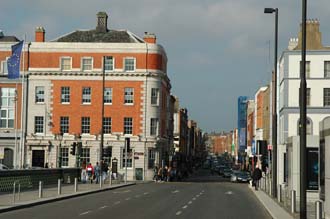Dubliners repeatedly
points to James Joyce’s disapproval of British rule in Ireland. His family consisted of strong advocates of
the nationalist movement led by Parnell to instigate Home Rule in Irish Parliament. However, while they longed for a united,
independent Ireland, the Joyce household expressed a frustration with the
Catholic Church, which naturally would have risen as a prominent component of
Irish society under Home Rule. Within
James’ short stories are several accounts of clergy members, church doctrine,
and the overall religious experience that portray the Church as an improper
institution.
“The Sisters” describes the influence a paralyzed priest,
Father Flynn, has on a young boy.
Reminiscing over lessons regarding history and the Latin language, the
boy is troubled that his mentor is soon to die, though he wonders if Old Cotter’s
claim that a young boy ought to be spending his time with children his age, not
with an old man, has some veracity to it. He is further troubled when company at the
mourning house following Father Flynn’s death recount his mental decline and
rumors regarding licentious behavior before his paralysis set in. “Grace” illustrates another case of wariness,
though not quite as immoral, towards the Church. After his drunken fall, companions of Tom
Kernan attempt to set him straight and request his presence at a Catholic
retreat. After much prodding, Kernan
agrees to attend, though he refuses to support any superstitious practice,
particularly the use of candles in renewal of baptismal vows.
In one piece of criticism, Joyce stated on behalf of the
Roman Catholic Church growing to become a greater power than the British Empire: “I do not see what good it does to fulminate
against the English tyranny while the Roman tyranny occupies the palace of the
soul.” His inclusion of so many
religious references, many based on reality, proposes that the Church’s wide
influence has ensnared its members into believing in an afterlife that is not
undoubtedly genuine. Perhaps Joyce felt
the Church’s offense was greater than Britain’s because its promises instilled
a “false hope” in many practitioners enduring oppression or social indignity during
the late 19th century and early 20th.















































